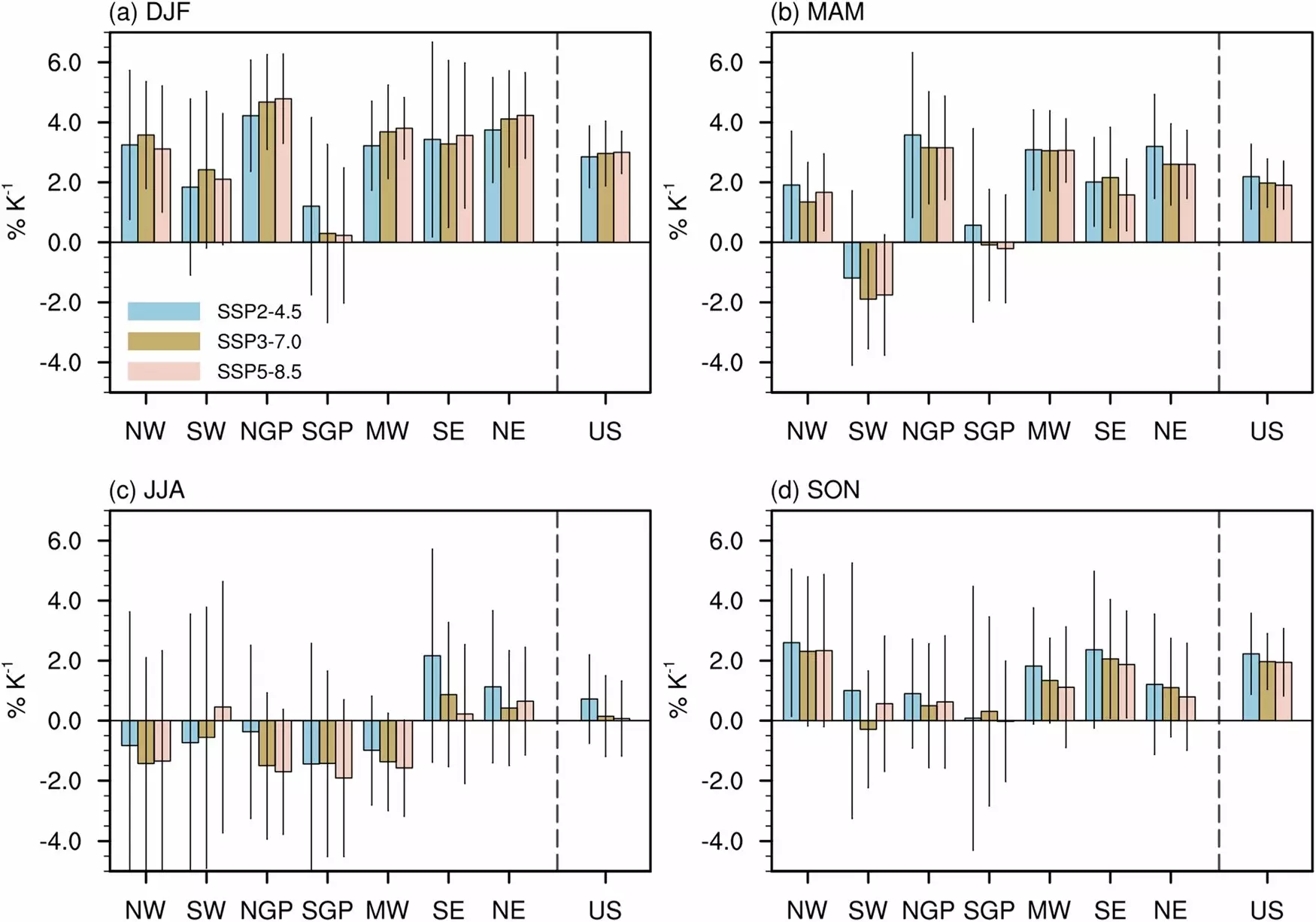As global temperatures continue to rise, Americans are facing a major shift in their winter weather patterns. A comprehensive study led by Akintomide Akinsanola from the University of Illinois Chicago highlights an alarming trend: the United States will experience wetter winters as we approach the end of the 21st century. Utilizing advanced climate models, this research offers critical insights into how winter precipitation will dramatically transform, posing significant challenges for various sectors, including agriculture and flood management.
The study, featured in the journal npj Climate and Atmospheric Science, illustrates that the changes in winter precipitation will not be consistent across the entire nation. It predicts that the frequency of “very wet” winters—those falling within the top 5% of total winter precipitation in U.S. history—will increase significantly. For certain regions, these extreme winters could occur as often as once every four years. As climate change progresses, the interaction between snow and rain is set to evolve, with many areas witnessing a shift toward more rain than snow—a development that could have far-reaching implications.
To conduct this extensive analysis, Akinsanola’s team employed 19 Earth system models and examined precipitation patterns across seven U.S. subregions as established by the National Climate Assessment Report. By comparing projected precipitation by the end of the century (2070-2099) to historical data from 1985-2014, significant trends were identified. On average, winter precipitation is expected to rise about 2% to 5% for each degree of warming.
Among the subregions, the Northwest and Northeast of the United States appear particularly vulnerable, experiencing some of the most pronounced increases in winter precipitation. Conversely, the southern Great Plains region, encompassing states like Texas and Oklahoma, present a paradox: while other areas will likely see more extreme wet weather, this region may experience only modest changes or even a concerning uptick in extreme dry spells. This divergence underscores the complexity of climate impacts across the country.
The implications of such drastic shifts in winter precipitation patterns extend beyond simple forecasts; they threaten to reshape our environmental and socio-economic landscape. Akinsanola emphasizes that the projected intensification of winter precipitation presents a more pronounced impact than anticipated alterations during spring or summer. This revelation prompts an urgent need for policymakers and infrastructure planners to re-evaluate existing systems and prepare for potential environmental challenges.
As the incidence of flooding rises in conjunction with increased winter rainfall, infrastructure upgrades will become imperative. Akinsanola stresses that merely adjusting to mean precipitation levels is insufficient; adaptive measures must also account for heightened occurrences of extreme weather events. Upgrading drainage systems, robust flood controls, and resilient building designs are crucial measures that can mitigate future risks.
The research conducted by Akinsanola provides valuable insights, but it also points to a broader need for localized studies that utilize higher-resolution models. Currently, his team is working on further investigations that will enhance predictions for precipitation changes, heatwaves, and other extreme weather events, tailored to specific communities. Such localized analyses are essential, as they will allow stakeholders—ranging from local governments to agricultural producers—to implement targeted strategies that foster resilience within their regions.
The warming climate heralds a future marked by wetter winters throughout much of the United States. The scientific community must continue to refine its understanding of these changes, advancing predictive models and action strategies that prioritize community resilience. As we brace for these inevitable changes, the urgency for informed decision-making and proactive planning has never been greater. The time to act is now; our collective future hinges on it.


Leave a Reply